Kent Henricksen is best known for his embroidered paintings on silk and his ceramic sculpture. The subjects of his figurative art don masks and elaborate costumes that transform their wearers into spirits, beasts, or ancestral beings. He has lived and worked in New York City and Cold Spring, NY since 2002.
His work has been the focus of numerous solo and group museum exhibitions including the Bass Museum of Art in Miami Beach, The Gold Standard (2006) and Greater New York (2005) at PS 1/MOMA; ARS 06, Museum of Contemporary Art KIASMA, Helsinki, Finland; Crafty, curated by Lisa Tung, Sandra and David Bakalar Gallery, Massachusetts College of Art, Boston, and Pricked: Extreme Embroidery, at the Museum of Art and Design, New York.
Gallery exhibitions include Paul Kasmin, New York; John Connelly Presents, New York; Hiromi Yoshii, Tokyo; Arario Gallery, Seoul; Galleria Glance, Torino; c/o Atle Gerhardsen, Berlin; and Mario Diacano, Boston.
He is the recipient of numerous awards including the Acadia Summer Arts Program and a finalist for the Louis Comfort Tiffany Foundation Award. Residencies include Wave Hill in the Bronx and LES Artist Alliance.
Henricksen has lectured at many universities and institutions, including The Rubin Museum, Ringling College of Art and Design, and the Acadia Summer Art Program. He has taught children through the Joan Mitchell Art Foundation serving underprivileged New York City school children.
Henricksen’s work has been reviewed in numerous publications including the NY Times, Art in America, HyperAllergic and White Hot Magazine. Roberta Smith in the New York Times describes Henricksen’s work by saying it “dazzles on every front — skill, color, narrative suggestion, pictorial complexity”.
His work is in the permanent museum collections of the Hirshhorn Museum, The Brooklyn Museum, The Fogg Museum at Harvard and the Bass Museum of Art in Miami to name a few.
In this interview, Kent takes us through his journey as a self-taught artist. We learn why silk is his preferred fabric and the techniques he employs to create his mesmerising and sumptuous artwork.
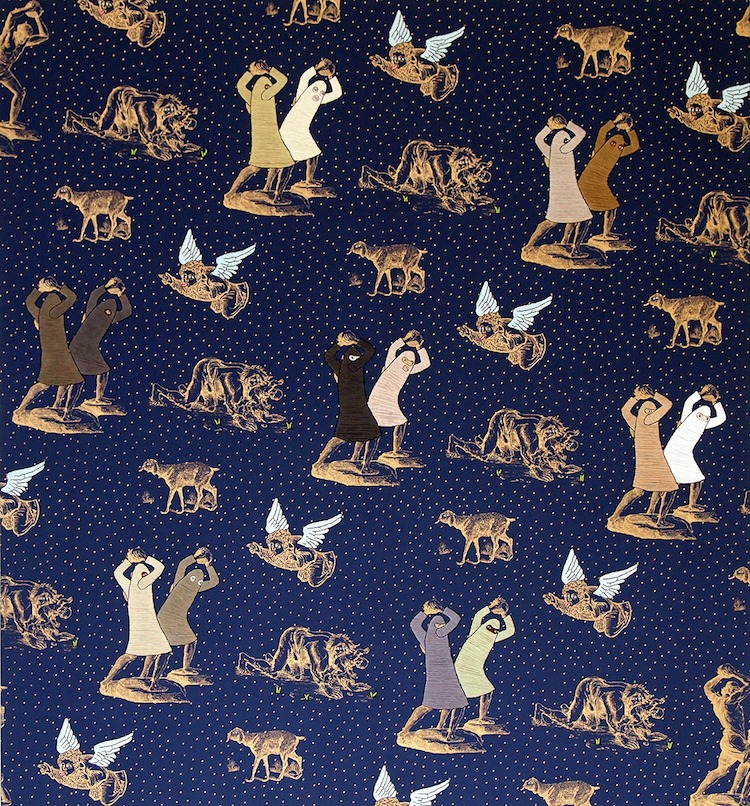
A direct connection
TextileArtist.org: What initially attracted you to textiles as a medium?
Kent Henricksen: I think it comes from two places. First, the familiarity of the material initially attracted me to it. As an 11 or 12-year-old, I used to make yarn pictures with my mother. These pieces were made with plastic mesh cards with images printed on them. Some were of sailboats on the water or ducks flying over a pond. You had to weave the thread through the mesh to match the color and create an image in yarn. I really enjoyed doing those projects. Also, in high school, I was really into making hats for some reason, plaid beanies and other round hats that I would sew on a sewing machine. I think this early introduction to textiles stayed with me.
Second, I am a self-taught artist. I didn’t go to college or to grad school for art. I partially chose embroidery and fabric as a medium because it is not the typical materials associated with fine arts, it’s not oil paint or marble sculpture, it relates more to decoration and domesticity than other art materials. This play of fine art as decorative was an early focus of mine. The use of embroidery thread has this expectation to be decorative and dainty but it can also be stimulating and tough. I don’t consider myself a textile artist; I consider myself a fine artist and the use of textiles is just one aspect of my practice.
And, more specifically, how did stitching capture your imagination?
What I love about stitching is that it’s delicate but strong. A piece of thread can easily be broken, but twist some together and sewn them onto fabric and you have a physically strong element. Embroidery and sewing are part of our everyday lives, it’s on all our clothing, in our houses and on our furniture, in our decorations, and on our curtains. Every culture seems to use stitching to some degree, it’s a common denominator, it connects us all together. It also crosses time periods. We have an example from many cultures from around the world; Egypt to Peru to Italy. Using a material that is so common makes a direct connection with people and viewers.
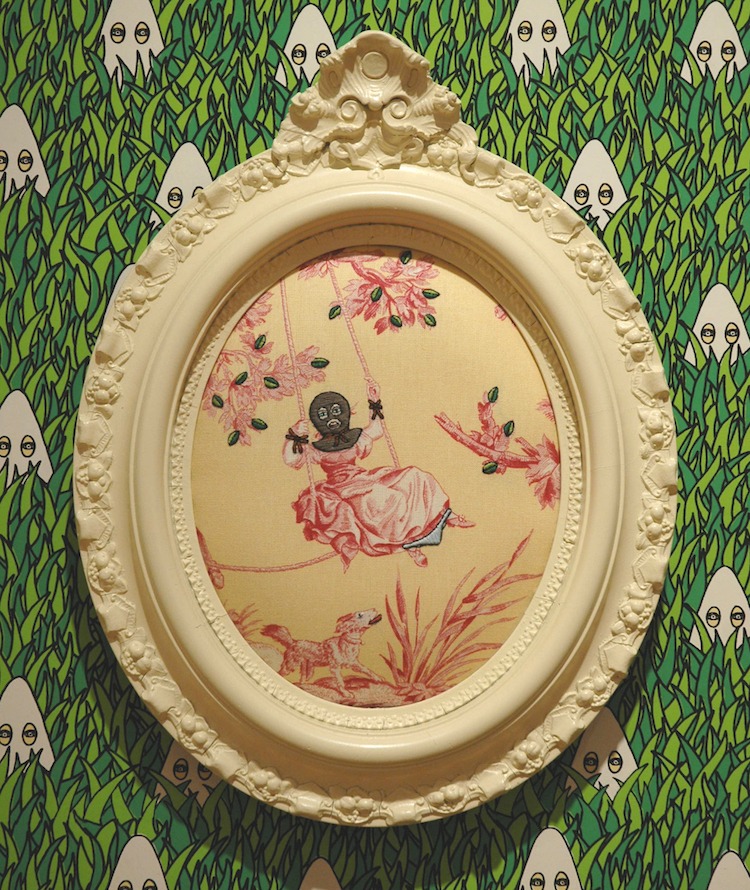
My own idea of storytelling
What was your route to becoming an artist?
I studied English Literature in college at CU Boulder and couldn’t find a job after graduating. Finally, I landed a job at Jamba juice in Denver and started painting in my bedroom. With no luck in Denver, I headed to SF and found a job in an art gallery that sold contemporary art. The SF art world was very tight knit and I was able to meet and hang out with so many artists who lived there or came to the gallery to do a show. I hung out with Kiki Smith, Barry Mcgee, Joel Shapiro, Ed Ruscha, so many people that really helped me learn what is was like to be an artist. It was like a hands on graduate program.
After a while, SF felt small so my girlfriend and I went to Asia for a year to see what was happening. We checked out Cambodia, Vietnam, Laos, Indonesia, Japan, India, Nepal, and Thailand. After Asia, we moved to NYC, and I started showing in galleries pretty quickly after landing. I was at a birthday party and we all hung our art on the walls. I think the next day a gallerist came to my studio and took a whole bunch of embroideries to his gallery.
Tell us a bit about your chosen techniques.
I started using embroidery in 2004 after a trip to northern Vietnam. I really liked the aprons the women of the Sapa Valley were wearing. I liked the colors and story like quality of some of the designs. I wanted to create my own idea of storytelling with embroidery and so I did. My first embroideries were of simple hooded figures on canvas 4 x 4 inches with three or four colors. They were based on The Liberation Tigers of Tamil Eelam, a group of freedom fighters from Sri Lanka.
One of the first techniques that I started to use and continue to use today is the four thread embroidery floss technique. The embroidery thread I use is DMC, which comes in 6, thread pieces of embroidery floss. I pull these apart and only use 4 pieces of thread in the needle for stitching. I often mix 3 or 4 pieces of different colors of single embroidery threads together to create my own colors. I consider this a painting technique- mixing my own colors.
After embroidering on canvas, I moved on to find printed or woven works such as toilets and machine woven tapestries. I would usually add elements such as ropes or hoods to animals or people. I got bored with the found fabrics and felt limited so I started creating my own images and had them printed onto silks, linens, and cotton fabric. My embroidered paintings today are mostly made by creating images on the computer and silk-screening then onto patterned woven silks and then embroidering parts of the imagery.
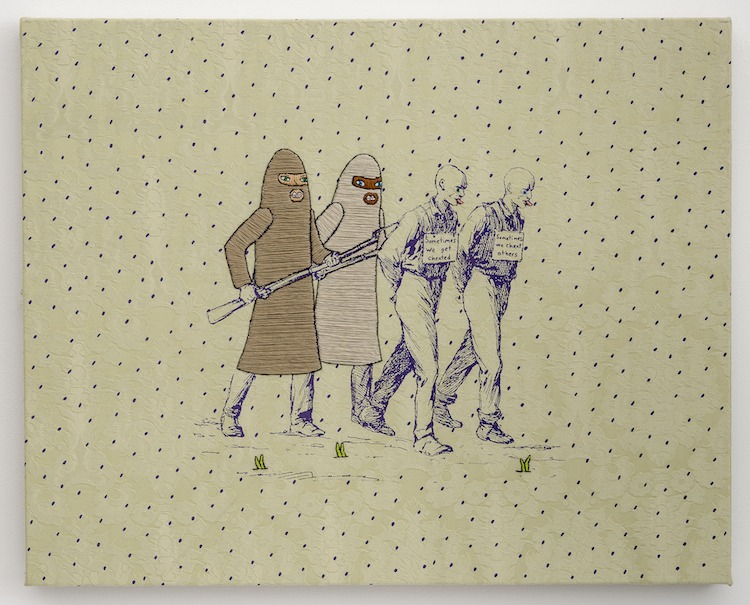
An outsider in the fine art world
How do you use these techniques in conjunction with stitching?
An early decision I made was to limit the techniques of the stitching so I could concentrate on the painting as a whole. I didn’t want the embroidery to become the focus. The two types of stitches I use are the satin stitch and the split stitch. The split stitch I use for rope imagery, it’s the only stitch I use to represent the texture of an element in one of my paintings. The split stitch looks like braided rope to me.
How would you describe your work and where do you think it fits within the sphere of contemporary art?
This is an interesting question because embroidery is still very much considered craft and put into the category of design more than fine art. I consider myself a fine art artist in the contemporary art world, yet I often get grouped together with other embroidery artists simply because we use the same material.
An example of this would be the Extreme Embroidery show that was at the Museum of Art and Design put together in New York in 2007. The curators collected artists that use embroidery in their practice and thus the show was held. This was a material based show compared to an idea based show. And since I didn’t come up through the system I am considered an outsider in the fine art world, which I’m happy with.
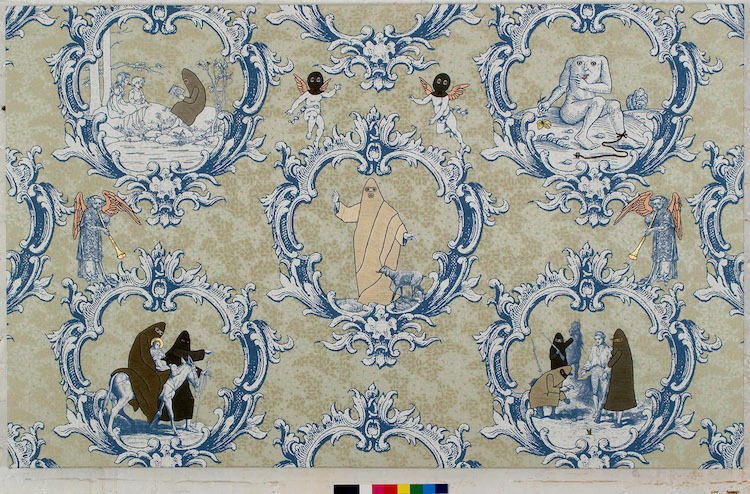
Trial and error
Do you use a sketchbook? If not, what preparatory work do you do?
I don’t really use a sketchbook anymore. I really enjoy drawing things out on Photoshop and playing with scanned images. I like changing the scale of images and the line size of images, and this is all possible on the computer.
Tell us about your process from conception to conclusion.
The process for creating my embroidered paintings starts by having an idea, for example, “I want to make a creation myth painting!” So, I often look through books either at the library or maybe a bookstore like Strand. For a while, I was going to the rare book room on 42nd street and looking through metaphysical books from the 1500’s for woodblock print images. Sometimes I look online for image sources from libraries where I can see creation myth images.
After I find the image that interests me, I put them in Photoshop and play around with the size and composition. I either add elements by drawing with a Wacom pen, take away parts of an image, add two images together, it could be anything, flip it overturn it upside down. After the image on the computer is finished I have it transferred to a silk screen and then print it on fabric. Printing on silk is tricky because not all colors work and the silk is delicate, so a lot of this is trial and error. It’s then embroidered and possibly gold leafed and then stretched and framed.
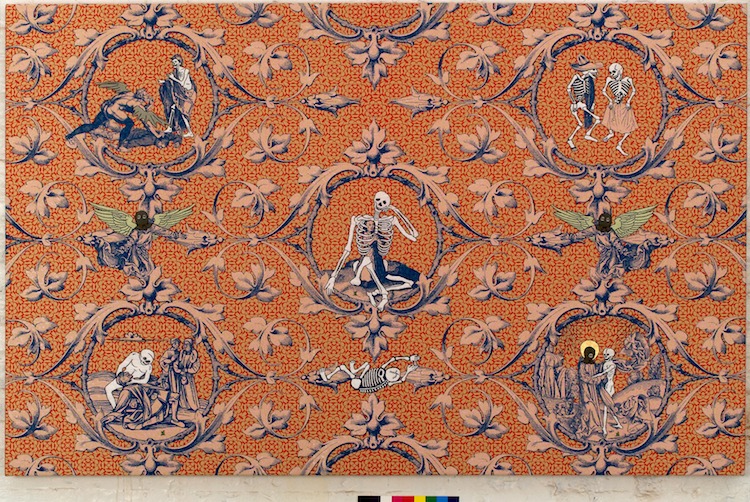
Finding clarity to focus
What environment do you like to work in?
I recently moved out of the New York City. I had lived in Manhattan for the past 15 years and kept a studio in Williamsburg, Brooklyn. I had a wonderful studio that was about 450 square feet but was taken from me and turned into a two-bedroom apartment.
Now, I have a beautiful studio on two floors in a carriage house built in 1870 in Cold Spring, NY. The first floor is the dirty area for ceramics and wood sculpture. The second floor is the clean area for embroidery and all textile work. I love it, it’s next to my house and has everything I need. The energy here in the Hudson Valley is much different than the city. It feels more majestic here with the mountains and the river compared to the buzz of the hive of the city. I think I am finding more clarity to focus on projects here.
Who have been your major influences and why?
One of my favorite stories to tell about an influence is about Louise Bourgeois. As a child growing up in Paris, her family lived in the fashionable St. Germain during the week in an apartment above the gallery where her parents sold their tapestries. The family also had a villa and workshop in the countryside where they spent their weekends restoring antique tapestries. One of her jobs restoring the old tapestries was to cover up or change all the indecencies of imagery. She would cover Cherubs or nude women and men with leaves and vines. I often think of my work as undoing of all of these changes. My work often shows the indecencies of human behavior and tries to find humour in it as well.
How has your work developed since you began and how do you see it evolving in the future?
Though I still use embroidery in my practice, it is not a central element of my work anymore. I found it difficult to find freedom in the stitch, so now I use my hands for clay and a chainsaw for wood sculpture. Also, my patience has changed. I find it extremely hard to sit for 8hrs a day embroidering silk. I find I can only do 2-4 hrs a day, but this slows production down so much.
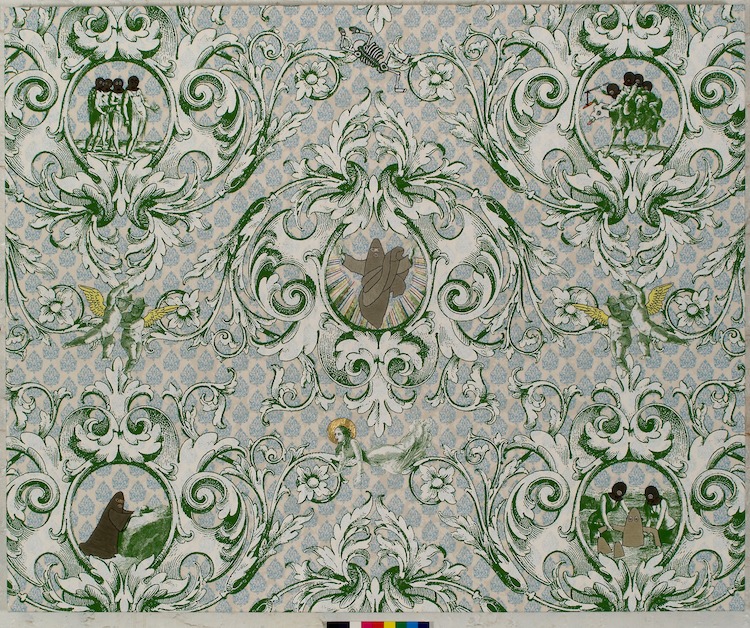
Can you recommend 3 or 4 books for textile artists?
Some textile books I have and look at for reference are:
- [easyazon_link identifier=”1856690881″ locale=”UK” tag=”wwwtextileart-21″]Early Nasca Needlework by Alan Sawyer
- [easyazon_link identifier=”0300109253″ locale=”UK” tag=”wwwtextileart-21″]Wearing Propaganda – Textiles on the Home Front in Japan, Britain, and The US
- [easyazon_link identifier=”050027617X” locale=”UK” tag=”wwwtextileart-21″]Wrapped in Glory- Figurative Quilts and Bedcovers
- [easyazon_link identifier=”B013ROX2UA” locale=”UK” tag=”wwwtextileart-21″]Revolutionary Costume-Soviet Clothing and Textiles of the 1920’s
- [easyazon_link identifier=”0300124074″ locale=”UK” tag=”wwwtextileart-21″]Tapestry in the Baroque- Thread of Splendor from the Metropolitan Museum
What other resources do you use? Blogs, websites, magazines etc.
I like to check out hyperallergic.com for articles on the art world that are a little outside the box. Whitehotmagazine.com is another is another. Contemporaryartdaily.com is good to see what other people think is cool and happening.
Where can readers see your work this year?
I will have a solo show in November at:
I will be in a group show in the fall at:
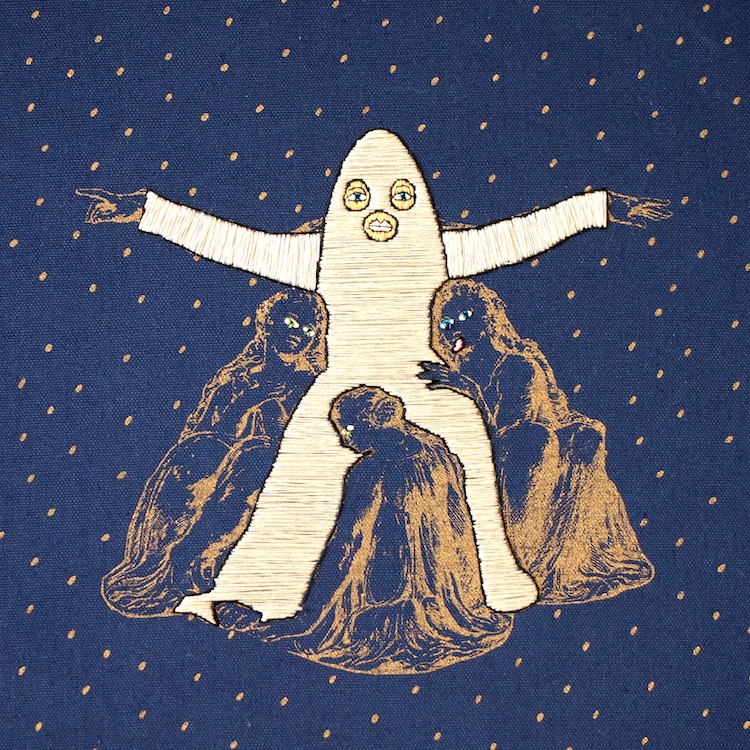
For more information visit: www.kenthenricksen.com and www.harvardartmuseums.org
Got something to say about the techniques, materials and processes used by this artist – let us know by leaving a comment below.
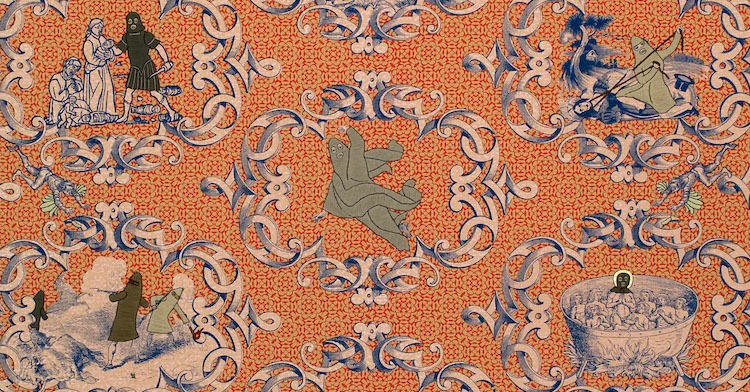
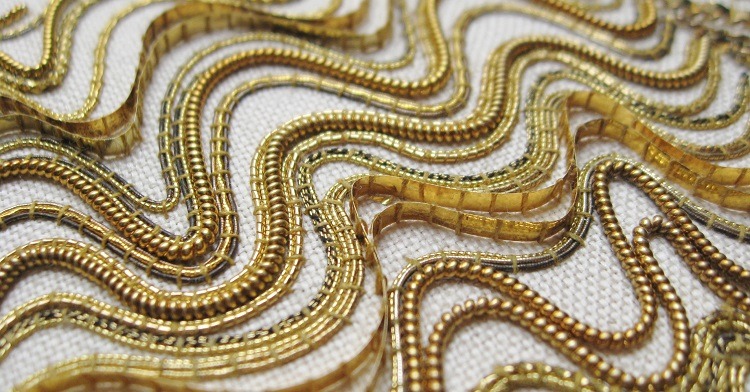
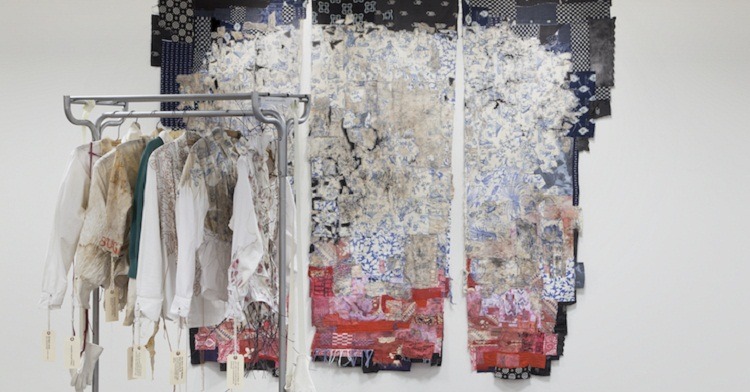
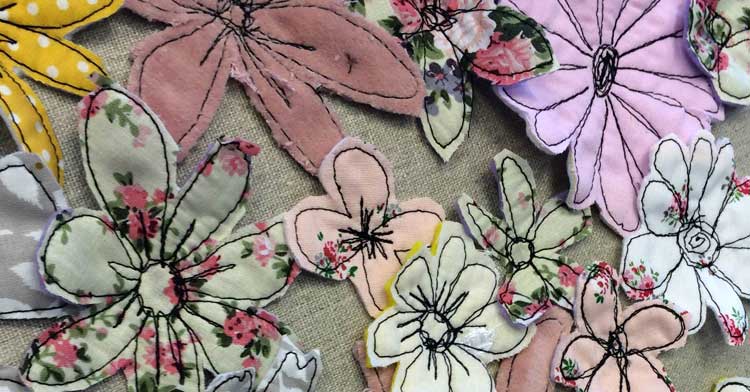
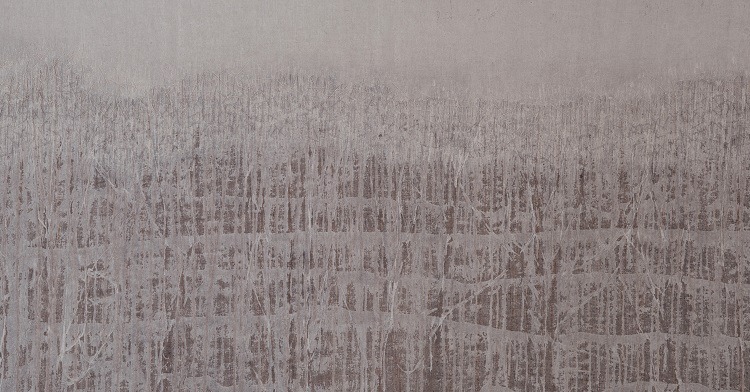
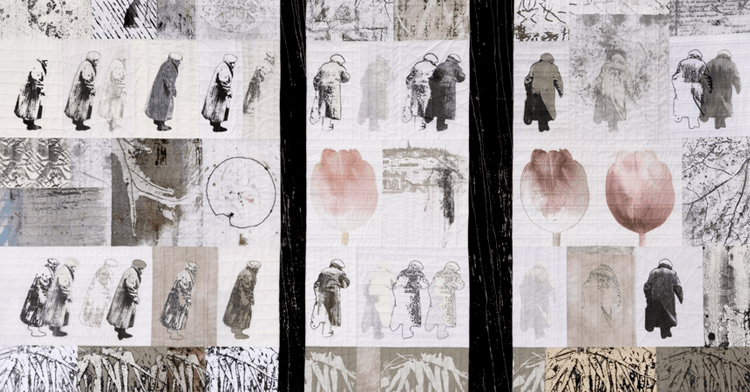
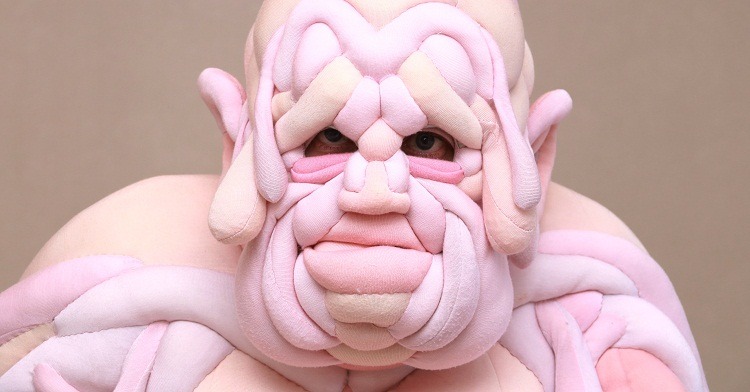
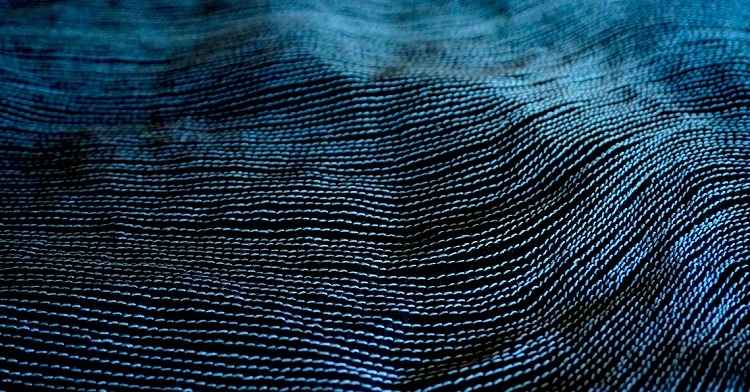
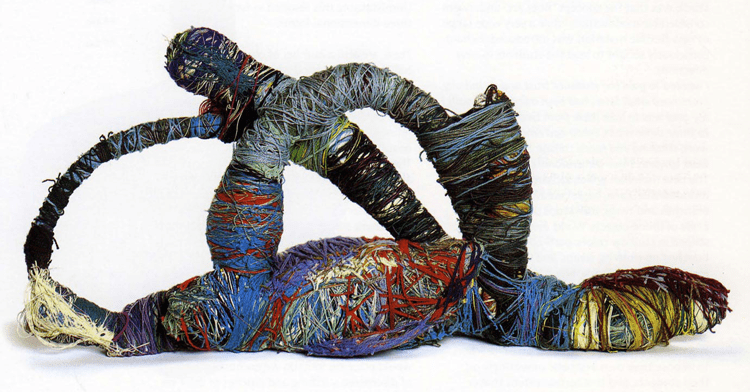

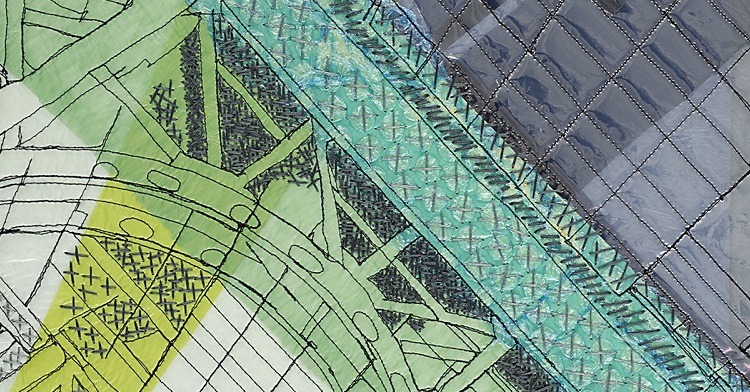
1 comment
Samantha Gardier
I found this work the most inspiring work that I have seen in years. Over the years it gets really hard to find something really new and fresh, especially when you’ve studied art at masters level. I have been stitching and printing in the last few years and didn’t realise how many artists are doing it so beautifully. Although beauty is not always the way that an artist would want they’re work described in this case it feels appropriate for the aesthetic quality of the work. I also love the cultural influence that is clear to see. Sometimes when an artist deceives the work it is difficult to pick up on different points that the artist is trying to deceive but in the case of Kent Hendrickson I could read so much in the work before I had even read the artists comment. Thankyou so much for this I give my applause to the artist.